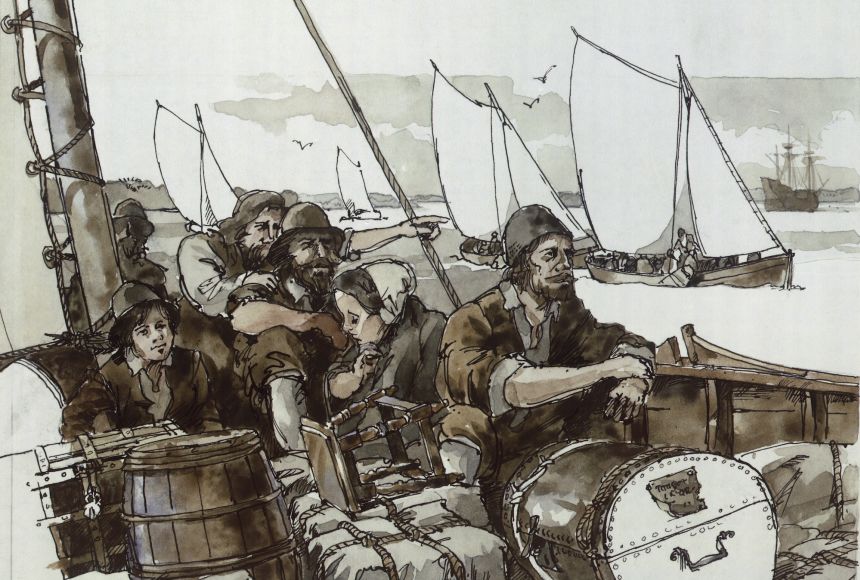Hundreds of years ago, Europe went through a time of great exploration and colonization. Europeans had grown used to receiving many goods from Asia such as silk, spices, and pottery. These goods had traveled the Silk Road, a trade route connecting the East and the West. However, in the 16th century, new leaders began to take over Asia and Europe. With the change, the Europeans focused on shipbuilding and sea navigation. Rather than traveling by land, European countries began traveling by sea. This way, they could venture farther and for longer periods.
Christopher Columbus was an Italian explorer. He was hired by Spanish rulers to find a faster route to Asia by sailing west rather than east. In 1492, Columbus landed on an island that he believed to be in East Asia. However, it was an island in the Caribbean Sea. Columbus called this land the "New World." It was soon taken over by the most powerful European countries. Colonization began as these countries began to create permanent settlements. Among these countries were Spain, France, the Netherlands, and England. All wanted wealth and power, but each country had different reasons for colonizing.
Driven by Fame and Fortune
Spain was driven by three main motivations. The first two were fame and fortune. Throughout history, the Spanish grew rich from all the land they conquered in Central America and South America. They destroyed great empires in the lands they claimed, and while the Spanish were not as successful in what is now the United States, there are still remnants of their rule there today.
The oldest surviving European settlement in the United States, in St. Augustine, Florida, was built by the Spanish in 1565. Many other settlements did not survive the clashes with Native Americans.
The Spanish also fought to spread the Christian faith to Native Americans. Missions were created to convert the native people and teach them the ways of the Europeans. The first mission was led by Don Juan in New Mexico in 1598. As time went on, these missions became more established and grew larger. Guarded by soldiers and used as a home base for explorers, the missions grew from villages to cities. Some of today's largest cities in Florida, Texas, New Mexico, and California were once missions.
France Found Riches in the Fur Trade
France focused on a demand that seemed to be never-ending: the fur trade. Indigenous peoples were eager to trade animal furs for French goods. Beginning in 1534, the French began colonizing lands in Canada and elsewhere in North America. However, France's influence in North America was always relatively small.
The Netherlands is a small country, but because of its powerful navy it had a large reach. The Dutch controlled trade with islands in present-day Indonesia, which enabled them to create colonies. The English explorer Henry Hudson was employed by the Dutch to find a new water route to the Indonesian islands. He did not find a passage, but he did discover the Hudson River, which flows between what is now New Jersey and New York.
Along this river, settlements were established by the Dutch as the island of Manhattan was purchased from indigenous people in the area in 1626 and renamed New Amsterdam. Yet, the success of the Dutch was short-lived. In 1664, the British took over the colony and renamed it New York.
England's Pilgrims Land in the New World
England was the most successful of all the European countries in North America. In 1606, King James I colonized Virginia with the help of a company of individuals who helped pay for the colonization. England was also motivated by the riches of the New World and the sea route. However, the country soon established permanent settlements in the New World for a different reason.
Religion was a key motivation for the British. In 1620, a group of settlers left England to join the New World. Many of them were separatists, a group of people who were trying to break away from the Church of England. They believed the church to be dishonorable and thought they might have the opportunity to worship by their own faith in the New World. While they were attempting to get to Virginia, their ship was blown off course and they landed on the coast of modern-day Massachusetts. They named their settlement Plymouth, after the town from which they originally set sail.
These were the first Pilgrims and they were followed by many more. Developing many materials, these pilgrims engaged in fishing, lumber, and shipbuilding. Farther south, colonies produced tobacco, rice, and indigo. All of this benefited Britain, up until the colonies fought for and won their independence 200 years later.

